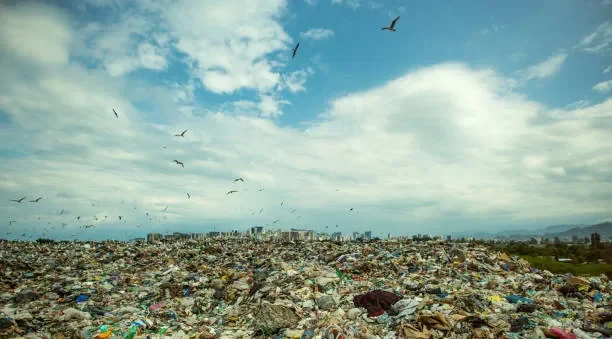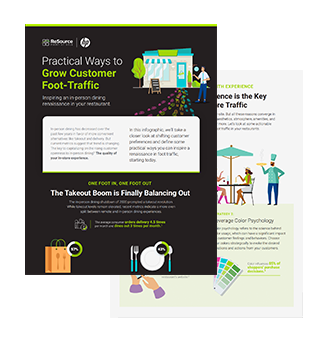The Scale of the Problem
Food waste is a pressing issue in the restaurant industry, with significant environmental and financial implications. Restaurants in the United States generate over 11 million tons of food waste annually, costing the industry billions of dollars each year. Addressing this problem is crucial for any restaurant looking to improve its sustainability and profitability. The sheer volume of waste not only impacts the bottom line but also contributes to broader environmental challenges, making it imperative for restaurant owners to take proactive measures.
Causes of Food Waste
Food waste in restaurants can stem from various sources, including overordering ingredients, improper storage, spoilage, and large portion sizes. Additionally, lack of training among staff on proper food handling and preparation techniques can contribute significantly to waste. Identifying and understanding these aspects is essential for effective waste reduction. For instance, food spoilage often results from inadequate storage conditions, such as incorrect temperatures or humidity levels, leading to unnecessary waste of perishable items.
Global Impact
Globally, nearly 2.5 billion tons of food are wasted every year. This staggering amount represents a significant loss of resources and highlights the potential for improvement. Recovering even a fraction of this waste could make a substantial impact on world hunger. According to the Food and Agriculture Organization (FAO), if food waste were a country, it would be the third-largest emitter of greenhouse gases after China and the United States. This underscores the critical need for global and local actions to mitigate food waste.
Impact on the Environment
Food waste has severe environmental consequences. When food waste decomposes in landfills, it produces methane, a greenhouse gas that is 25 times more potent than carbon dioxide. By reducing food waste, restaurants can significantly lower their carbon footprint and contribute to environmental conservation. Furthermore, the resources used in food production, such as water, land, and energy, are wasted when food is discarded. It is estimated that 24% of all water used for agriculture is lost through food waste, illustrating the broad environmental impact of this issue.
Solutions for Restaurants
Implementing better inventory management and predictive ordering systems can help align food preparation with actual demand, reducing waste and saving money. Technology and data analytics play a crucial role in optimizing these processes. For instance, using smart scales and food waste tracking software can provide valuable insights into waste patterns and help in making informed decisions. Restaurants can also adopt a “first in, first out” (FIFO) inventory system to ensure older products are used before new ones, reducing the risk of spoilage.
Economic Benefits
Reducing food waste is not only good for the environment but also for business. For every dollar invested in food waste reduction, restaurants can gain approximately $8 in cost savings. Embracing sustainable practices can lead to a more profitable and environmentally friendly operation. According to a study mentioned in the eBook, restaurants that focused on food waste reduction saw a 2-6% increase in profitability. These savings can come from more efficient purchasing, reduced disposal costs, and improved kitchen operations.
Case Studies
The eBook highlights several case studies where restaurants successfully reduced their food waste. For example, a mid-sized restaurant chain implemented a food waste tracking system and reduced their waste by 30% within six months, saving over $120,000 annually. Another case study features a high-end restaurant that introduced portion control and staff training programs, resulting in a 25% reduction in waste and significant cost savings. These examples demonstrate the tangible benefits of adopting waste reduction strategies and serve as inspiration for other businesses.
Steps to Reduce Food Waste
- Conduct a Food Waste Audit: Begin by assessing the current level of food waste in your restaurant. Track the types and quantities of food being discarded to identify key areas for improvement.
- Implement Inventory Management Systems: Use technology to monitor inventory levels and reduce overordering. Predictive ordering systems can help align purchases with actual demand, minimizing waste.
- Train Staff: Educate employees on the importance of reducing food waste and train them in proper food handling, storage, and preparation techniques. Encourage a culture of sustainability within your team.
- Optimize Menu Design: Design your menu to include ingredients that can be used across multiple dishes. This approach reduces the risk of unused ingredients spoiling and going to waste.
- Offer Flexible Portion Sizes: Provide customers with options for different portion sizes. This can help reduce plate waste and accommodate varying appetites.
- Engage with Customers: Educate your patrons about your efforts to reduce food waste and encourage them to participate, such as by taking leftovers home.
- Partner with Food Recovery Organizations: Collaborate with local food banks and charities to donate surplus food. This not only reduces waste but also supports your community.
- Monitor and Adjust: Continuously monitor your food waste levels and make adjustments to your practices as needed. Regular reviews and updates to your waste reduction strategies will help maintain progress.
- Leveraging Technology for Waste Reduction
Modern technology offers various tools that can assist restaurants in reducing food waste. Smart kitchen appliances, such as refrigerators and freezers with temperature monitoring, ensure that food is stored correctly and remains fresh for longer. Additionally, food waste tracking apps can help restaurant managers keep an eye on waste patterns and identify opportunities for improvement.
Predictive analytics can also play a significant role in waste reduction. By analyzing historical sales data, these systems can forecast future demand more accurately, allowing for better planning and purchasing decisions. This approach minimizes the risk of overordering and ensures that restaurants are stocked with the right amount of ingredients.
The Role of Packaging
Packaging plays a crucial role in food preservation and waste reduction. Restaurants can invest in high-quality packaging materials that extend the shelf life of perishable items. Additionally, eco-friendly packaging options can help minimize the environmental impact of waste. Compostable and biodegradable packaging materials are increasingly available and can be a part of a restaurant’s sustainability strategy.
Customer Engagement
Engaging customers in your food waste reduction efforts can also be beneficial. Informing patrons about your sustainability practices and encouraging them to participate, such as by taking leftovers home or opting for smaller portions, can help reduce overall waste. Many customers appreciate transparency and are more likely to support businesses that demonstrate a commitment to environmental responsibility.
Industry Collaboration
Collaborating with other businesses and industry organizations can amplify the impact of food waste reduction efforts. By sharing best practices and success stories, restaurants can learn from each other and implement effective strategies. Industry groups and associations often provide resources and support for businesses looking to reduce their environmental footprint.
Government and Policy Support
Government policies and regulations can also play a significant role in reducing food waste. Restaurants can benefit from staying informed about local and national initiatives aimed at waste reduction. Grants, incentives, and support programs are often available to help businesses implement sustainable practices.
Take Action
To learn more about how you can cut food waste in your restaurant and implement sustainable practices, download our free eBook, “Lean, Mean, and Green,” brought to you by Zebra Technologies and ReSource Point of Sale. The eBook offers detailed insights, practical tips, and real-world examples to help you make a positive impact on your business and the environment.
We’d be happy to learn more about your business and your needs and goals, and to recommend the best ways to unify your point of sale, payments and store operations across all your channels and customer touch points.
To get started, contact us now to learn more and schedule a discovery call at your convenience.

